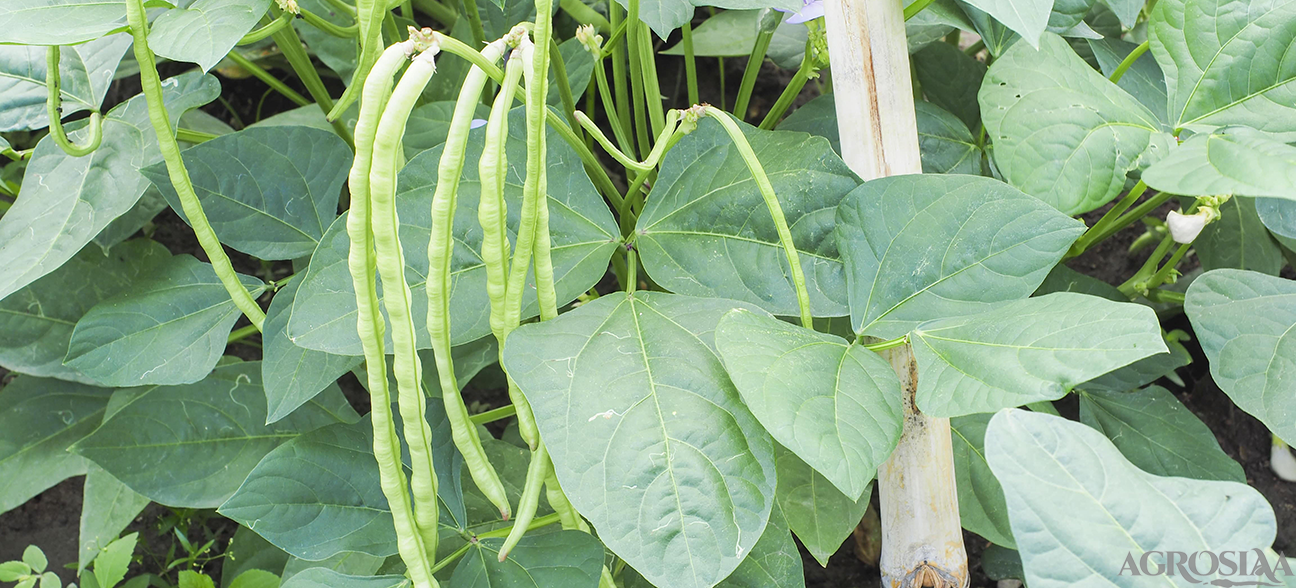Chavali
Leguminoceae
Vigna unguiculata
Kokan Sadabahar (VCM-8), C-152, V-240, Kokan Safed, Usa Phalguni, Phule Pandhari, P. Sawani
Kharif and Summer are proper seasons for sowing of cowpea crop.
Short day plant. Primarily tropical crop. It can with stand considerable drought and less sucesseptible water logging. It require longer period for better growth and yield. Grows in a area having rainfall less than 300-400 mm. Thrives well with temperature range 27-35 0 c.
Grows on wide range of soil including poor soil with low pH. However well drained , loam or heavy black soils are better suited. Saline and alkaline soils are unfit. pH should be neutral.
One ploughing after harvest of previous cropfollowing by clod crushing and 2-3 harrowing stubble collection for smooth sowing operation before last harrowing. Apply 5 tones FYM and well mixed in soil.
1) Seed treatment with trichoderma @ 5 g/ha of seed to control seed borne diseases.
2) Seed treatment with Rhizobium @ 250 g/10 kg of seed.
3) Seed treatment with PSB @ 250 g/10kg of seed.
-
Drilling is proper method of sowing cowpea.
Iind fortnight of June is sowing time for cowpea.
Spreading plants- Distance between two rows in 45 cm and distance between two plants is 10 cm. Non spreading plants Distance between two rows is 30 cm and distance between two plants is 10 cm.
-
Grain purpose and pod purpose 30 kg/ha Forage purpose – 40 kg/ha
Apply 5 tones /ha FYM before sowing. 25 kg N
50 kg P 2 O 5 (125 kg DAP/ha) at the time of sowing.
Water required for this crop is 25-30 ha. cm. grows mostly as rainfed but if dryspell prevails for long period then give irrigation as follows
1) Flowering stage 30-35 days after sowing
2) Grain development 42-45 days after sowing.
One hoeing is done after 20-25 days after sowingand one hand weeding is necessary pre emergence spraying of pendimethalin @ 0.75 kg /ha.
1) yellow mosaic (aphids) – Monocrotophos
2) Rust- Dithane M-45 @ 2 kg /ha
3) Powdery Mildew- dusting of sulphur @ 25 kg/ha
4) Bacterial blight- Apply copper oxychloride.
Aphids , Jassids and leaf hopper- spraying of Monocrotophos, Dimethoate
-
For vegetable purpose pods are harvested at 45-60 days after sowing. Cowpea is non synchronous maturity, harvesting is done when they mature.
For grain purpose- generally pod picking is done in morning and evening to avoid shuttering losses. Crop should not allow to stand in field upto dead ripe stage. Otherwise there is considerable loss in yield. When 75 % pods are dried 1 st picking, subsequence picking at one week interval. In all 3-4 picking are done.
(Qtls /ha) - Average yield of grains 12-15 Qtls/ha
Stored in storage binds, Poythene bags, Gunny bags
-
1) Also known as lobia and used as pulse , green manure and forage.
2) Grains are highly nutritious and content high amount protein (23-24%), 60.3 % CHO, different mineral Ca, Fe and Vitamines.
3) Being legume crop it improve fertility of soil through atmospheric N 2 fixation.
4) Imature pods are used for vegetable
5) Leaves of cowpea used for vegetable
Grading and cleaning then packed in 10 kg or 30 kg bags.
Maharashtra,M.P.Gujarath,U.P. Bihar
Maharashtra
-
-










